For fahima, On the Occasion of Flight: Words from the Overground
“they weep in an inside space”
Painting by Julia Mallory
Dear fahima,
There are many moments of before and after in life, and we often do not know when they will occur. This includes the moment before you know a creative body of work exists and the after when you are in its grip and forever changed. Your book, Maroon Choreography, has come to embody this reality for me. I moved through the text in early fall 2021 as the seasons changed around me and within me. At the time, my visual art practice was expanding, to use the words of Toni Cade Bambara, “I was back to paints again [...] partly because I need[ed] to work in a new language” (1). You channeled a lot in-between the pages, and I needed a way to express the grip the work had on me. Even now, words escape me and remind me that there is more than a singular way to express gratitude. These paintings represent my offering, from poet to poet, to convey the generosity I have received through your work. Poetry was my first creative love language, and the heartbeat of your text pulsates within my being.
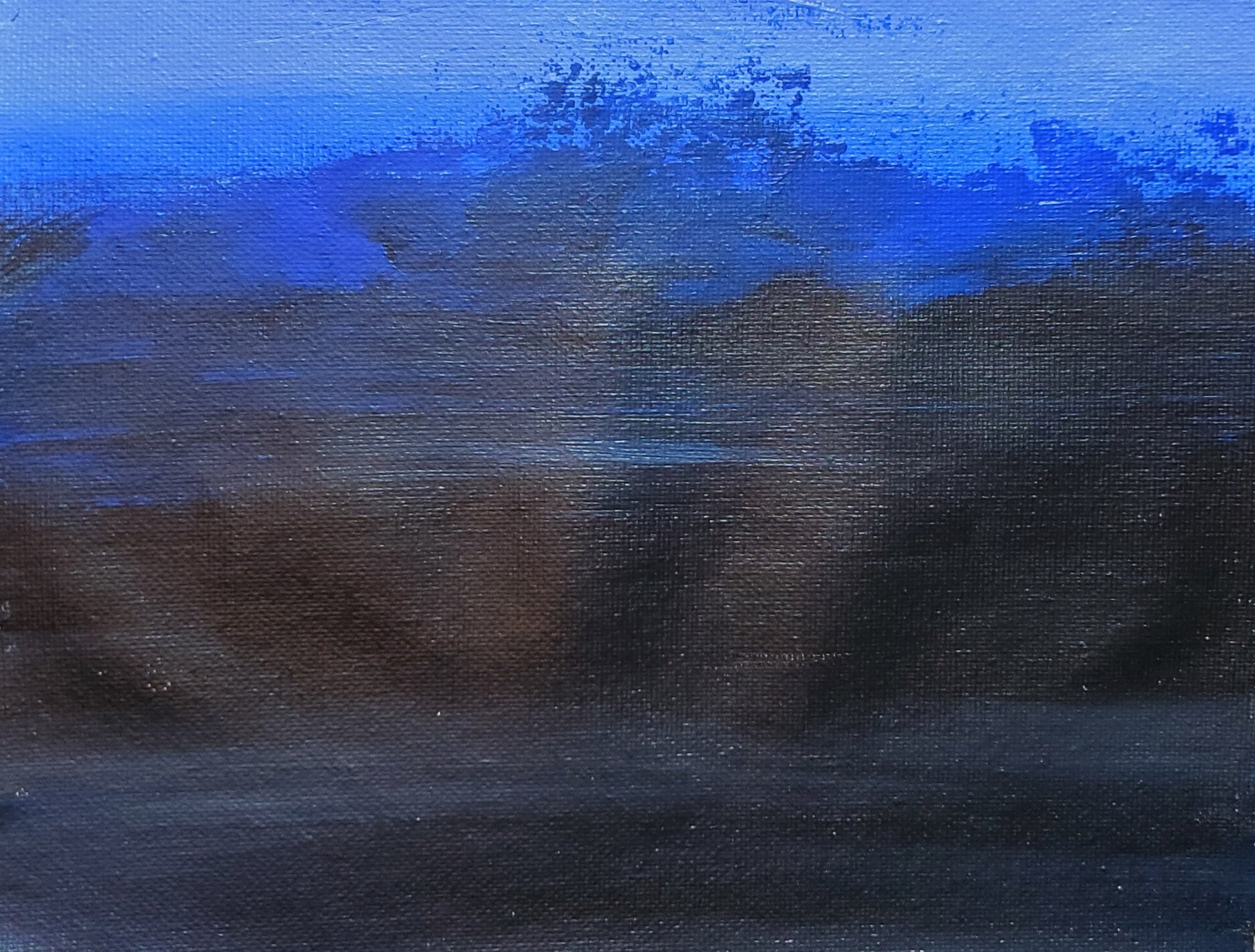
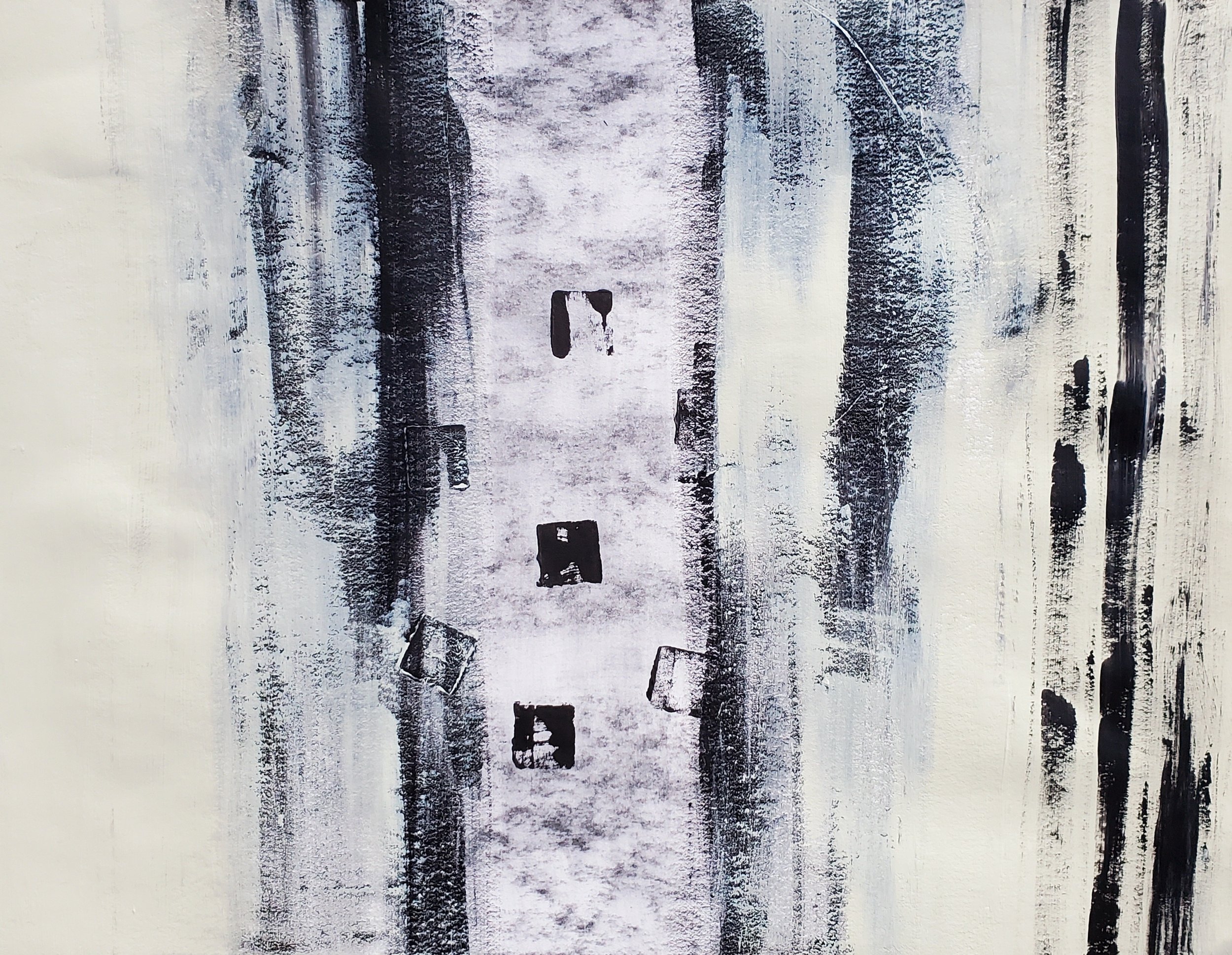
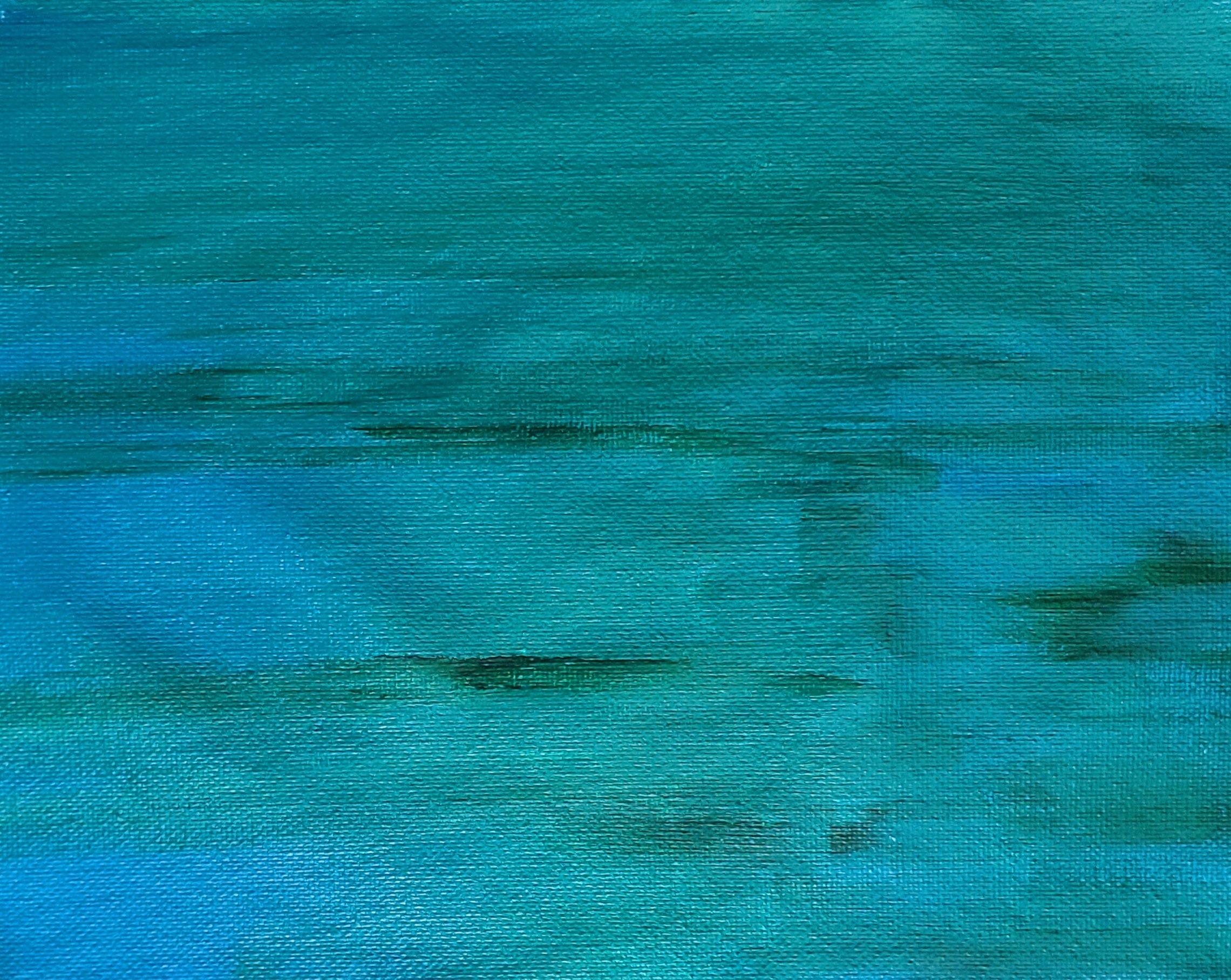
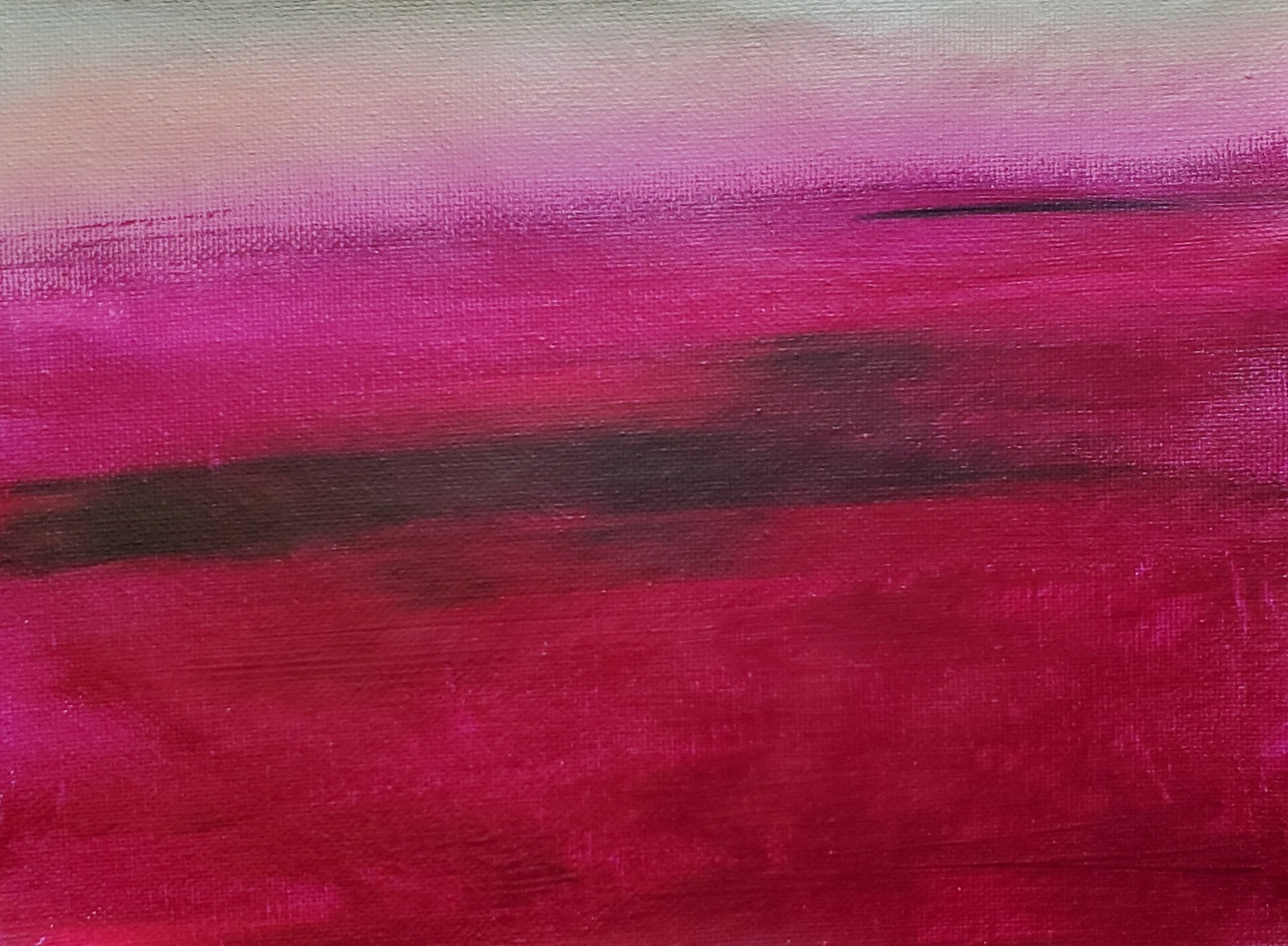
You have given us something to hold even if we know that it exceeds what can be held. It’s all more terrible and beautiful and monstrous and expansive than what could be captured in wor(l)ds we have the most immediate access to. ‘Inspire’ doesn’t sound like it can fully express what this work has done, but when I understand it to mean to breath/e in, something else opens up. In other words, Maroon Choreography put breath in my body.
Almost six years ago, I ran away to the forest as grief broke me open when my eldest son, Julian transitioned beyond this dimension. In your words, I “was not dead but close” (2). His earthly death disrupted the dam that had been holding back decades of repressed grief. In the forest, to quote you, I was fully aware of “the stars-body-spores, all together in a dance that lasts beyond the physical exchange of two people” (3) and when I “began to see dancers, inside the trees,” (4) I too started to dance. The presence of joy, a supernatural frequency that defied description and my understanding. In the deep green, in the blur of in-between, among the crystal stream—troubled, and waiting/wading in the water (5) for a miracle, I felt covered.
“bruised green arousal”
by Julia Mallory
I sit with the complexity of our ancestors who had to “weep in an inside space,” (6) this suppression a form of survival. And yet, who among them did not make it back outside themselves? And what does it mean to grieve as part of the intimate process of reclaiming our Black ass emotions (7) and not as a spectacle or as surveillance? How might this reclamation disrupt the theft of Black Grief Time and result in Grief Reparations (8)?
Your grief, a “twenty-year ache,” (9) vibrates through the pages and shook loose memories of my grandmother and father. You speak with such reverence for your grandmother Levada. Her stillness, the beauty of her speech, her “timing” (10). How such cadence can conjure connection. Folks I could listen to all day. The rise and fall of their words. The rhythmic ritual of their speaking. Sometimes sounds. Sometimes silence. And how might silence be its own sound, with its own shape (11)? My grandmother, my father’s mother, would sit for hours in silence, except for the slick snap and shuffle of cards as she played solitaire. My grandmother was full of well-timed one-liners or shifted time when her words were a stuttering symphony that located its own tempo.
“black and red pulsating”
by Julia Mallory
There is also something that you described about your grandmother as “the lingering texture of some faraway place she held in her throat” (12), which reminded me of my father’s storytelling about his experience in the Vietnam War as a teen soldier. The story would reach a climax and when he reached that peak, the story would put him inside himself and away from us; evidenced by an aural dip, the drift. He drifted on memories (13) from which there was no immediate return. In the novel The Salt Eaters, Toni Cade described her character Fred Holt as having “picked his way carefully through memories to keep from tripping over one that cost him too much” (14). Healing has unlocked many memories for me that were buried under the rubble of trauma. When it was safe(r), I tripped, let go, and fell back into myself.
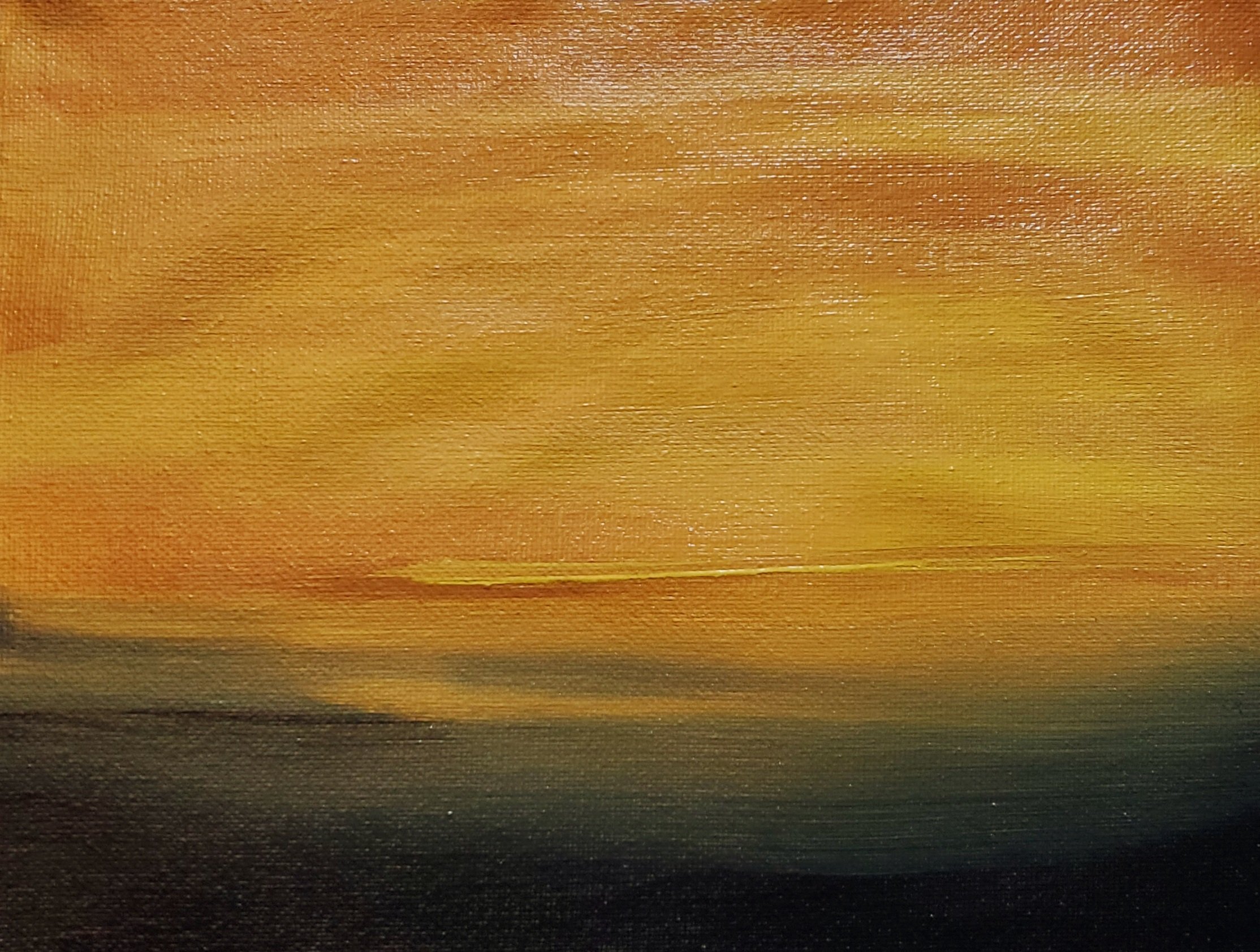

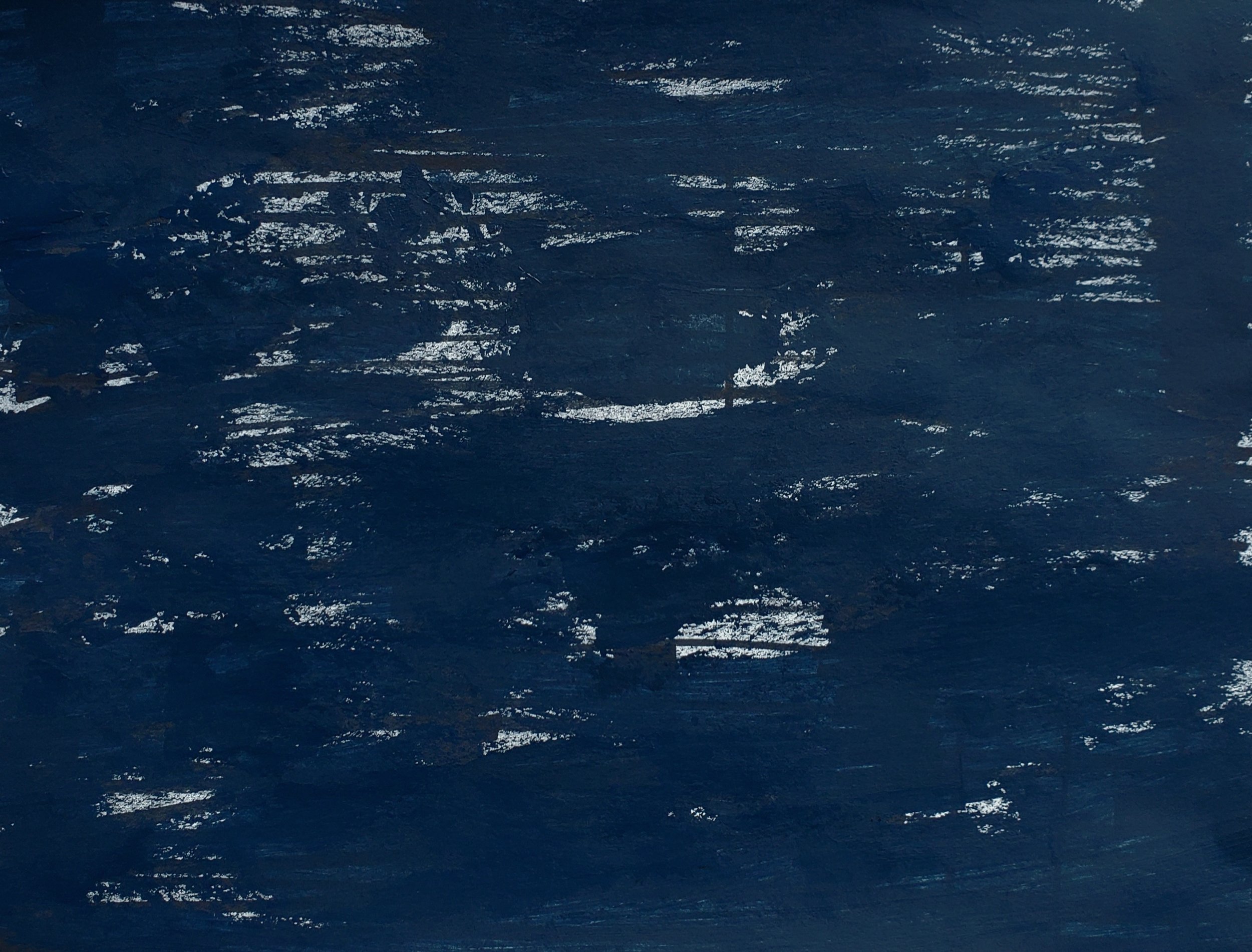

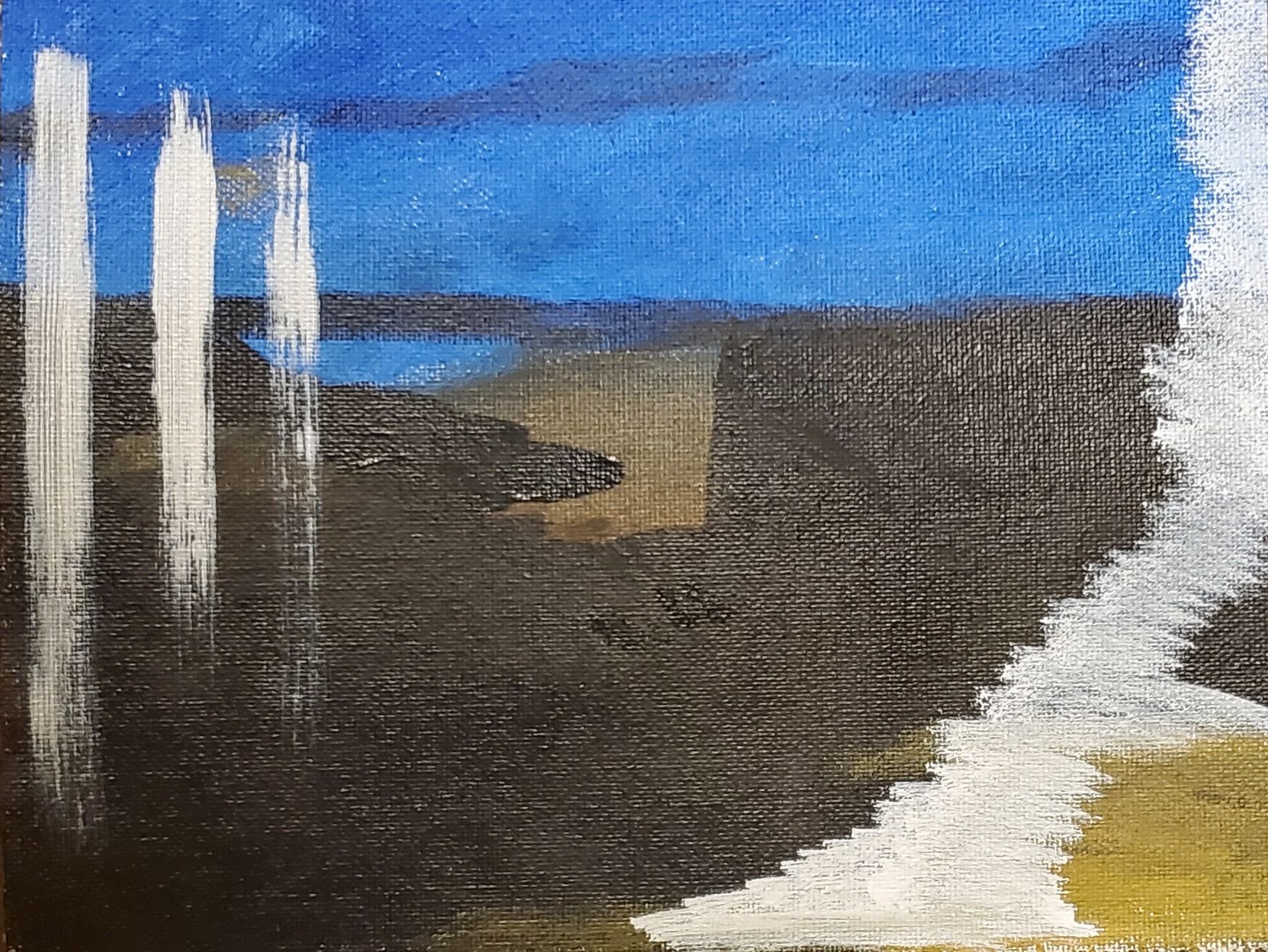
There is so much more I could say but in the interest of space I will begin to bring this note to a close by sharing the full Toni Cade quote that I opened this letter with as it best represents where I am in my creative life: “I’m back to the paints again, scripts, songs, especially film work. Partly, because I need to work in a new language; also because the lumps prying open the shell do not seem appropriate for print”(15). Maroon Choreography has pried open my creative shell and given me a new way to listen and connect language. More manifestations of this language soon come. Stay tuned.
With deep gratitude,
Julia
Contributor Bio
Julia Mallory (she/they) is a storyteller working with a range of media from text to textiles. She is also the founder of the creative container, Black Mermaids and serves as the Senior Poetry Editor for Raising Mothers and a Poetry Editor for The Loveliest Review. Their work can be found in the Black Speculative Arts Movement exhibition “Curating the End of the World: RED SPRING”, The Offing, Stellium Literary Magazine, Sugarcane Magazine, Torch Literary Arts, and elsewhere. Their short, experimental film, Grief is the Glitch, debuted in 2022.
For more information, visit www.thejuliamallory.com.
Sources
1. Toni Cade Bambara, “Salvation Is the Issue,” in Black Women Writers 1950-1980: A Critical Evaluation, ed. Mari Evans (New York: Anchor Books, 1984), 43.
2. fahima ife, Maroon Choreography, Black Outdoors Series, (Durham: Duke University Press, 2021), 55.
3. ife, 85.
4. ife, 86.
5. Black Quantum Futurism, performance, Loop Hole of Retreat: Venice, October 8, 2022, https://www.youtube.com/watch?v=Fp36Nx7SAKE, 30:44.
6. ife, 22.
7. Airis Smallwood, undated public discussion.
8. Joy tabernacle-KMT, “Grief Reparations and Temporal Hush Harbors,” Prime Meridian Unconference, April 17, 2022, https://vimeo.com/showcase/9534688/video/713339505.
9. ife, 88.
10. ife, 89.
11. Elisha Luckett, personal correspondence, November 30, 2022.
12. ife, 89.
13. The Isley Brothers, “For the Love of You, Part 1 & 2,” The Heat is On, T-Neck Records, PZ 33536, 1975, vinyl LP.
14. Toni Cade Bambara, The Salt Eaters, (New York: Vintage Books, 1980), 73.
15. Toni Cade Bambara, “Salvation Is the Issue,” in Black Women Writers 1950-1980: A Critical Evaluation, ed. Mari Evans (New York: Anchor Books, 1984), 43
Julia Mallory. “collective ache.” 2021. Acrylic on unstretched canvas. 7 in x 9 in.1
Julia Mallory. “elder trees glimmer.” 2021. Acrylic on unstretched canvas. 7 in x 9 in.2
Julia Mallory. “chthonic cousins.” 2021. Acrylic on unstretched canvas. 7 in x 9 in.3
Julia Mallory. PORTALS: “we stand in many doorways at once.” 2021. Acrylic on unstretched canvas. 7 in x 9 in.4
Julia Mallory. fugue + (o) (l) ive. 2021. Acrylic on unstretched canvas. 7 in x 9 in.
Julia Mallory. Breathe in, Breathe out (side). 2021. Acrylic on unstretched canvas. 7 in x 9 in.
Julia Mallory. To take flight and live. 2021. Acrylic on unstretched canvas. 7 in x 9 in.
Julia Mallory. “Blue-Black Moaning.” 2021. Acrylic, ink, charcoal on paper. 12 in x 9 in.5
Julia Mallory. “this (porous) aftermath is an internal geography.” 2021. Acrylic, charcoal on paper. 12 in x 9 in.6, 7
Julia Mallory. “they weep in an inside space.” 2021. Acrylic, charcoal on paper. 12 in x 9 in.8
Julia Mallory. “bruised green arousal.” 2021. Acrylic, charcoal on paper. 12 in x 9 in.9
Julia Mallory. “black and red pulsating.” 2021. Acrylic, charcoal on paper. 12 in x 9 in.10
1. fahima ife, Maroon Choreography, Black Outdoors Series, (Durham: Duke University Press, 2021), 81.
2. ife, 124.
3. ife, 122.
4. ife, 62.
5. ife, 27.
6. ife, 36.
7. Jacoba Urist, “Titus Kaphar: In the Studio,” Gagosian Quaterly, May 4, 2020, https://gagosian.com/quarterly/2020/05/04/titus-kaphar-studio-visit-essay/.
8. ife, 22.
9. ife, 73.
10. ife, 17.



